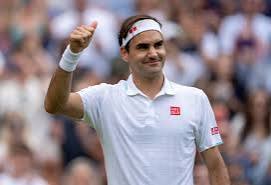On this day, May17, 2009, Roger Federer prevailed against Rafael Nadal on clay for only the second time in 12 encounters. On top of that, it happened in the final in Madrid, in Nadal’s own backyard, in front of the Spanish crowd. Although Nadal was exhausted after a four-hour semi-final against Novak Djokovic the day before, it was still an important achievement for Federer, a week away from the French Open. It was a sign that this year, after months of struggle, things were finally going his way in his quest to win Roland-Garros.
Roger Federer was 27 years old in May 2009, and he was going through a hard time in his career. He had single-handedly dominated the game in the years 2004-2007, winning almost everything except the French Open, the only major title he was still chasing. Rafael Nadal was the main reason Federer hadn’t won the French Open yet: the Swiss lost against him in the final in 2006, 2007 and in 2008, a challenging year for the Swiss. First, young Novak Djokovic defeated him in the Australian Open semi-final (7-5, 6-3, 7-6), but the worst was yet to come.
His rival Rafael Nadal, after destroying him in a painful Roland-Garros final (6-3, 6-1, 6-0), had managed to defeat him in his own garden at Wimbledon, after a five-set thriller (6-4, 6-4, 6-7, 6-7, 9-7). The Spaniard also took from him the world No 1 spot that Federer had held for 237 consecutive weeks.
Rock bottom was only reached at the 2009 Australian Open, when Federer lost again to his nemesis in five sets (7-5, 3-6, 7-6, 3-6, 6-2), and could not hold back his tears during the trophy ceremony.
At this stage in 2009, the Swiss had not only become Nadal’s challenger, but he had also been defeated by Novak Djokovic, Andy Murray and Stan Wawrinka. For the first time since 2000, Federer had not claimed a single title in the first four months of the year. Journalists started to talk about his decline.
- Rafael Nadal: The King of Clay and World No 1
Rafael Nadal was only 22, but his achievements had already secured him a spot in tennis history. He remained undefeated in Roland-Garros: since his first appearance, in 2005, four times he had participated, four times he was the champion. No one had even managed to push him into a fifth set there.
Besides, not only was he considered almost unbeatable on clay, having lost only two matches since his loss against Igor Andreev in Valencia in April 2005, but he had now improved his game and had claimed three of the last four Grand Slams on different surfaces.
The left-hander became world No 1 August 18, 2008 and it seemed that no one could prevent him from dominating the tour, as he had already collected five trophies in 2009, including of course the Australian Open, but also three Masters 1000 events (Indian Wells, Monte-Carlo, Rome). He seemed to be on his way to a fifth consecutive Roland-Garros title without anyone to challenge him.It was now played on clay at the Caja Magica, a brand new complex built for the occasion, displaying three courts with a retractable roof. The location was also at altitude (700m), which impacted the game, making the balls travel faster as well as bounce higher, and thus harder to control.

On May 17, 2009, the Spanish crowd was about to witness the 20th chapter of the Roger Federer and Rafael Nadal rivalry, the two men who ruled the tour since 2005. At this stage, Nadal was leading 13-6 in their head-to-head, but he was up 9-1 on clay, and had broken Federer’s dream of winning Roland-Garros four times already. Furthermore, he had won their five last matches, including on grass at Wimbledon and on hard court in Australia. The last time Federer had prevailed was at the 2007 Masters Cup, 17 months before.
Needless to say, Nadal should have been the favourite, but the day before, the odds changed when Rafa had to spend four hours and two minutes on court to beat Novak Djokovic 3-6, 7-6, 7-6 in the semi-final. In that match, which was at the time the longest best-of-three sets match ever played, Nadal had to save three match points before he sealed his victory, 11-9 in the deciding set tie-break.
Furthermore, the Spaniard had called the physio several times, appearing to have an issue with his knee. Could he recover on time to beat Federer? He had done so at the Australian Open, recovering from a five-hour marathon against Fernando Verdasco in the semi-final to beat the Swiss in the final in five sets.
Using the fast conditions to his advantage, Federer played an aggressive game since the beginning. Attacking on Nadal’s backhand, he came to the net more than he did against the Spaniard in most of their clay court clashes. Meanwhile, Nadal was not moving as fast as usual and, despite a few spectacular passing shots of his own, concealed the first set, 6-4.
In the second set, Federer didn’t release the pressure and although Rafa tried to hold on, Roger broke him as early as 2-2 and didn’t leave him any chance to break back. After one hour and 20 minutes of great aggressive tennis, hitting 25 winners, Federer claimed his first title of the year and his second win against Nadal on clay. He also reminded the world not to count him out as a contender for the Roland-Garros crown.
In the press conference, after dismissing questions about his knee, which had bothered him during the semi-final, Nadal looked for no excuses and he praised Roger’s performance.
Leave a Reply